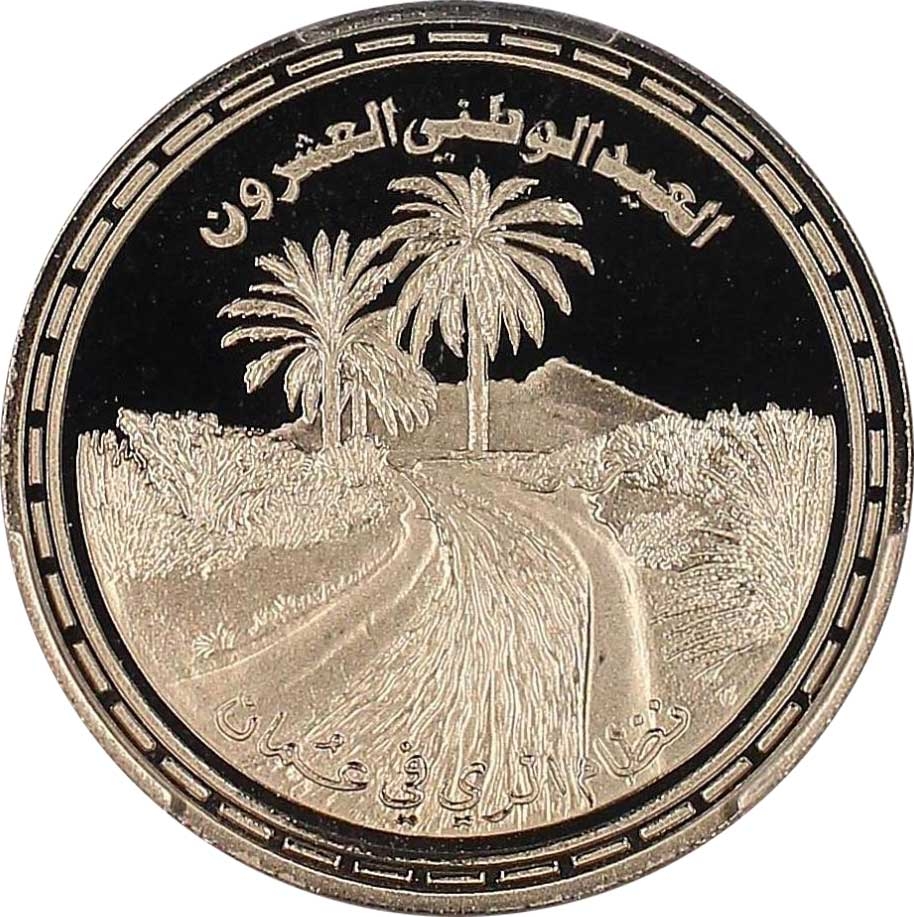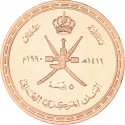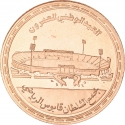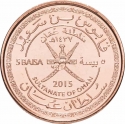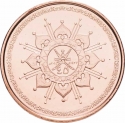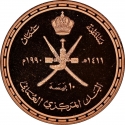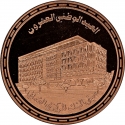You are about to finish your registration. Please check your mailbox (including spam folder). There should be a letter with a confirmation link. Check setting to make sure that your e-mail address is correct.
Send letter againDescription
Qaboos bin Said Al Said (1940–2020) was the Sultan of Oman from 23 July 1970 until his death. A fifteenth-generation descendant of the founder of the House of Al Said, he was the longest-serving leader in the Middle East and Arab world at the time of his death.
National Day is an official holiday in the Sultanate of Oman and the main one in the country. The holiday currently celebrates the birthday of Sultan Qaboos bin Said al Said.
Obverse

|
Depicts crowned national coat of arms of Oman divided date, surrounded by name of country above and the inscription "Central Bank of Oman" below, denomination below. سلطنة عمان |
|---|---|
Reverse

|
Depicts the Aflaj Irrigation Systems of Oman with plants on both sides and palm trees in the background, the inscription "20th National Day" above and "Irrigation system in Oman" below. العيد الوطني العشرون |
| Edge |
50 Baisa
National Day of Oman
20th Anniversary
Subscribe series
KM# 79 Schön# 88
National Day of Oman
20th Anniversary
Characteristics
| Type | Commemorative Issue (Non-circulating) |
| Material | Cupronickel |
| Weight | 6.48 g |
| Diameter | 24 mm |
| Thickness | 1.8 mm |
| Shape |
|
| Alignment | Medal |
| Alt # |
|

